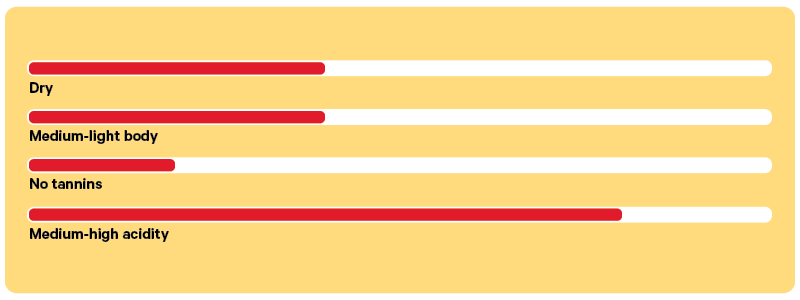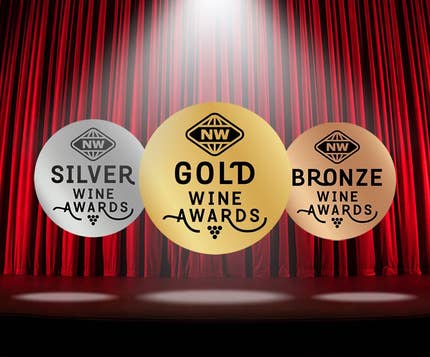Guide to Pinot Gris
This aromatic crowd-pleaser with juicy, stone fruit flavours can range from light and zesty to rich and spicy. Find your flavour.

Thanks to New Zealand's diverse wine regions, our local Pinot Gris offers a variety of styles and flavours to trial. This varietal usually falls into the semi-sweet or off-dry wine category.
Here's a guide on what to know and look for when buying your next delicious drop.
What's a good Pinot Gris to buy?
1 / 0
How much do I spend?
The $20 to $30 price range usually offers well-balanced, flavourful wines that showcase the quality of local Pinot Gris.
Of course, you can find decent options for a bit less or splurge on premium bottles for more complex flavours.
Read out wine pricing guide for more.
Storing and serving
|
|
|
Before serving: | Once opened: | Serving: |
| Keep away from direct sunlight at a stable, cool temprature. A light, aromatic Pinot Gris should be enjoyed in one to two years, (while an oaked Pinot Grigio could last three to four). | Store in the fridge and drink within 3-5 days. | Around 7°c is ideal for most Pinot Gris. (If colder than 7°c, you will lose flavour and aroma). |
Pinot Gris average nutrition in 150ml glass (1 serving)
Alcohol 11% to 14% | Calories90 to 140 | Sugar 1.5 - 3.5 grams | Carbohydrates 3-5 grams |
Pinot Gris compared to other wines
Body:
Pinot Gris is medium-bodied, with a slightly richer taste than Chardonnay. Chardonnay often feels creamier, especially if oak-aged.
Acidity:
Both have moderate acidity, but Pinot Gris is often softer, and smoother in the mouth. Chardonnay can be crisp or ‘round’, depending on the style.
Dryness/sweetness and taste:
Pinot Gris ranges from dry to off-dry, with flavours of pear, apple, and stone fruits. Chardonnay is typically dry, with citrus, green apple, and tropical fruit flavours, with oaky or buttery flavours if aged in barrels.
Learn about Chardonnay
Body:
Pinot Gris is medium-bodied and rich. In comparison, Sauvignon Blanc is light-bodied, crisp, and refreshing.
Acidity:
Pinot Gris has moderate acidity, which gives it a softer, smoother taste in your mouth. Sauvignon Blanc is highly acidic, delivering a zesty, sharp feel.
Dryness/sweetness and taste:
Pinot Gris can range from dry to off-dry, with flavours of pear, apple, and stone fruits. Sauvignon Blanc is typically dry, featuring bright, citrusy flavours like lime and grapefruit, along with herbal or grassy notes.
Overall, Pinot Gris is fruitier and more versatile in sweetness, while Sauvignon Blanc is crisper and more aromatic.
Learn about Sauvignon Blanc
Body:
Pinot Gris is medium-bodied and Pinot Noir is light to medium-bodied. It’s the flavours and of course the colour, that sets them apart.
Acidity:
Pinot Gris has moderate acidity, providing a softer, smoother experience. Pinot Noir has moderate to high acidity, giving it that fresh, lively finish in your mouth.
Dryness/sweetness and taste:
Pinot Gris can range from dry to off-dry, with fruit-driven flavours like pear, apple, and stone fruits. In contrast, Pinot Noir is dry, with red fruit flavours like cherry and raspberry, often accompanied by earthy or floral notes.
Learn about Pinot Noir
Body:
Pinot Gris is medium-bodied, experts would say it has a richer, rounder feel. In contrast, Riesling is light-bodied, with more of a delicate, crisp feel.
Acidity:
Pinot Gris has moderate acidity, so it’s smoother and softer. Riesling is known for its high acidity, giving it a bright, zesty feel.
Dryness/sweetness and taste:
Pinot Gris can range from dry to off-dry,and Riesling can vary from bone-dry to sweet. Both wines can be aromatic and fruity. Riesling is more aromatic with a sharper, more refreshing taste. Pinot Gris is more likely to be barrel-aged and that means it’s creamier, with flavours of vanilla and honeysuckle.
Learn about Riesling
Body:
Pinot Gris is medium-bodied, smoother and slightly richer. Moscato is light-bodied, offering a lighter, more delicate feel in the mouth.
Acidity:
Pinot Gris has moderate acidity, and Moscato has low to moderate acidity, which complements its sweeter profile.
Dryness/sweetness and taste:
Pinot Gris can range from dry to off-dry, with flavours of pear, apple, and stone fruits. Moscato is usually sweet, with flavours of peach, apricot, and orange blossom. It’s known for its sweet, fruity, and floral character.
If you’ve got a celebration brewing, you can also find sparkly versions of both of these wines.
Which food does Pinot Gris pair well with?
- Mild soft cheese such as brie, camembert, or mozzarella
- Seafood
- Chicken
- Salads
- Lightly spiced dishes
Read out food pairing guides for more.
Pinot Gris FAQs
Pinot Gris and Pinot Grigio are made from the same grape but differ in style because of how they’re made. Pinot Gris, (often made in France and New Zealand), is richer and more full-bodied, with flavours like ripe pear, apple, and spice. Pinot Grigio, popular in Italy, tends to be lighter, crisper, and more citrusy.
Due to the range of temperatures, each wine region produces slightly different Pinot Gris flavours:
Marlborough: The cooler climate produces a more aromatic wine, with distinctive flavours of peach, red apple and cinnamon.
Hawke’s Bay: The warmth creates ripe, rich, concentrated flavours.
Gisborne: More sunshine gives full-bodied Pinot Gris, with flavours of peach, pear, golden apples and complex spices.
North Canterbury: Produces a more aromatic Pinot Gris. Expect to find pear, stone fruit, and a slightly grassy aroma, as well as a burst of spices like ginger and cinnamon.
An unopened bottle of Pinot Gris can generally be stored for 1 to 3 years, depending on the quality of the wine and storage conditions. Higher-end Pinot Gris may age even longer, developing more complex flavours over time. To store it properly, keep the bottle in a cool, dark place with a consistent temperature and away from light and heat.
Check for these signs:
- Colour: If the wine has turned a darker or brownish hue, it might be spoiled.
- Smell: A sour, musty, or vinegar-like odour is a clear indicator it's gone off.
- Taste: If it tastes overly sour, flat, or off in any way, it’s likely no longer good to drink.
- Cork condition: A dry or cracked cork can let air in, which could spoil the wine.
To round out the flavours and add complexity to our local Pinot Gris, some Kiwi winemakers have introduced oak barrel ageing, which is commonly used to make Italian Pinot Grigio.
A New Zealand Pinot Gris or Pinot Grigio that has been ‘oaked’ or ‘oak aged’ in the barrel will have a creamier, more buttery texture, will be less acidic, and have flavours of vanilla and coconut that you won’t find in an unoaked variety.
1. Chill it: Serve it well-chilled at around 8-10°C (46-50°F) to bring out its crisp flavours. 2. Use a white wine glass: To help concentrate the fruity and floral aromas. 3. Let it breathe: If it's a richer or more complex Pinot Gris, consider letting it breathe for 10 - 15 minutes before serving. 4. Pair with food: Yum!
Pinot Gris is ideal for cooking. Compared with Sauvignon Blanc and Chardonnay, Pinot Gris is the most ‘neutral’ and least likely to add flavours that will overpower your dish.



































